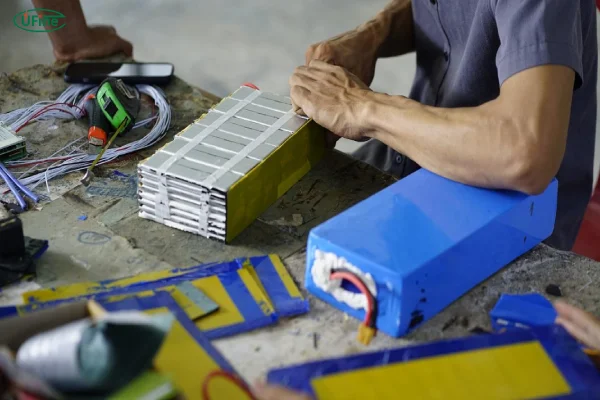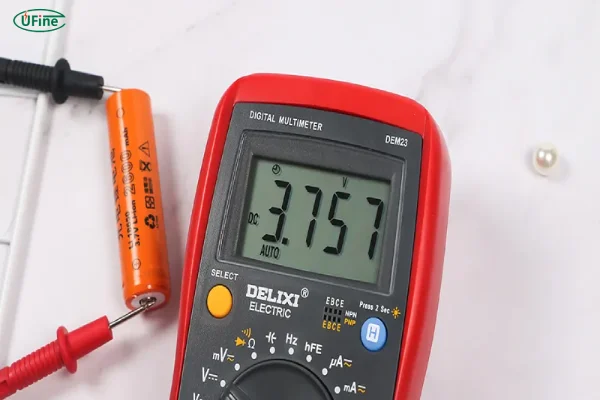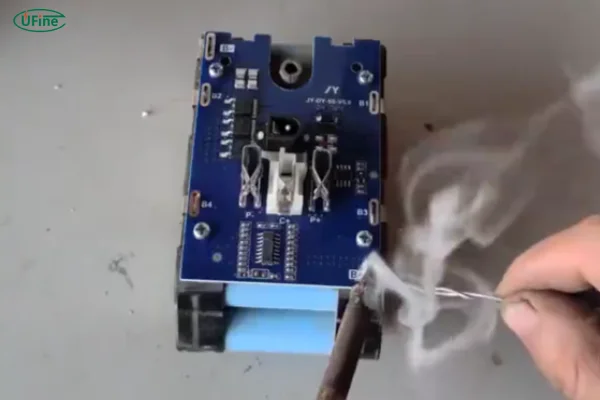Often, with time, lithium batteries lose their charging and discharging quality. In such conditions, you only have two options to choose. The first one is to replace the battery, which can cost heavily for your budget. The second option is the lithium battery repairing technique, which is cost-effective and suitable.
So, if you are tired of your lithium battery losing its power and not holding a charge like it used to and are looking for lithium ion battery restoration, Don’t worry; some techniques can help revive your lithium battery and restore its functionality. In this article, we will guide you on lithium battery repair methods to fix lithium battery issues.
Part 1. What is lithium battery repairing?
In the lithium battery repairing process, we fix li ion battery issues that can stop the functionality of the battery. Suppose the battery has stopped working completely before the degradation period. In that case, you can avoid buying a new one, but lithium-ion battery repair is an alternative solution. But first, ensure the issue is relevant to repairing the lithium battery. Therefore, we have a breakdown of what lithium battery repairing might involve:
1. Diagnosis
The diagnosis method helps to find out the real cause of the interruption in the working of the lithium battery. A multimeter can help measure the battery’s voltage. Moreover, check for physical damage to the battery or corrosion, or look for swollen ones and heat up.
2. Simple Fixes
Always try to find some initial causes before going towards lithium battery reconditioning methods. It includes checking for a loose connection to the battery, terminal wire cut off, and need for cleanliness.
3. Balancing Cells
Lithium batteries are mostly packed with many cells. Therefore, sometimes, one cell overcharges or discharge case issue combines with battery problems. In such conditions, you will need to address such a singular cell instead of proceeding toward lithium battery repair.
Lithium Battery not Charging and How to Solve it?
Part 2. Common lithium battery repairing methods
Usually, we should move from simple to complex methods for lithium battery reconditioning methods. The common lithium battery repair methods are so simple and easy that you can do them yourself.
1. Cleaning Terminals
Start by cleaning the battery terminals if you do not see any visible problem with your lithium ion battery. Corrosion to the metal can hinder power delivery. Therefore, take a cotton cloth and wipe off the terminals properly. Using sandpaper can be a good option, and after the cleaning process, some petroleum jelly can be put in, and the terminal connections can be fixed again.
The Battery Terminal Blues: Understanding Corrosion and How to Fix It
2. Resting Battery
The modern lithium batteries come with a BMS Battery Control System. This system protects the battery from overcharging and discharge. Sometimes, the metrics of BMS start to malfunction. So, in such conditions, the battery can cause inconveniences in performance. You can take the lithium ion battery restoration method to rest the BMS at the factory setting.
3. Repairing Lithium Ion Battery Packs
Usually, a lithium battery is a combination of many 3.7V cells. If any such cells malfunction or do not work properly, it can cause problems for the whole battery. So repairing lithium ion battery packs is the most cost-effective way. It will require a multimeter to check the voltage of each cell one by one and trace the faults that have a lower voltage range below 3.6V on a full charge. After the identification, you must replace it by removing it and soldering it to a new one with the same rating.
4. Balancing Cells
Once you have repaired lithium battery cells by replacing them with new ones, you will have to balance all the cells at the same voltage range. For this purpose, charge the cells one by one with a lithium battery charge with a rating of 3.7 volts. It will fix the lithium battery, help charge it fully, and cut it off naturally.
Part 3. Professional lithium-ion battery repairing techniques
Now, move to professional methods to do lithium battery repair jobs. It will require professional expertise to do the job. However, knowing professional methods to fix lithium ion batteries can benefit everyone. So, let’s talk about the most professional lithium ion battery reconditioning methods. (remembering these should only be done by trained individuals):
1. Electrolyte Replacement
It is a rare method to repair a lithium battery in which an expert attempts to change the electrolyte of the battery. The electrolyte is highly flammable when it reacts with air or moisture. Therefore, this procedure requires a dedicated environment to avoid fire and sparking.
2. Internal Component Repair
Sometimes, internal components like the Battery Management System (BMS) do not work correctly because it is responsible for proper charging, discharging, and safety management. So an expert knowing micro soldering and electrons will repair or change BMS for lithium ion battery restoration.
3. Advanced Cell Analysis
For troubleshooting complex battery failures and attempting to fix li ion battery, technicians might use specialized tools to analyze individual cells within a pack. This could involve impedance spectroscopy or other techniques to assess the health and condition of each cell.
4. Battery Part Rebuilding
It is a method to create custom parts for lithium battery reconditioning. When a battery gets damaged physically, we usually use custom repairs to each battery’s needs. For example, making a new case for battery packs holding or customizing the broken terminals of the lithium ion battery.
Part 4. Safety considerations
Lithium batteries combine flammable materials that can cause sparking, fire, and explosion. Therefore, we highly recommend taking all the safety considerations to repair the lithium battery.
Importance of Safety in Lithium Battery Repairing
- Lithium batteries contain electrolytes that can easily ignite if exposed to air or moisture. Therefore, try to avoid puncturing or mishandling the battery. Such conditions can cause a fire or explosion.
- If you don’t have proper knowledge of lithium battery repair, it can damage the battery’s safety mechanisms. It will increase the fire risks.
- Don’t ever inhale the fumes of a damaged battery, as these are toxic to our health.
Protective Gear and Precautions
- Always wear proper personal protective equipment (PPE): First, you should wear safety glasses, gloves on the hands, and a mask before repairing lithium ion batteries. It will help to keep you safe from the harmful effects of the battery.
- Work in a well-ventilated area: Fumes from a damaged battery can be dangerous. Therefore, choose a ventilated area to repair the lithium battery.
- Have a fire extinguisher nearby: Always keep a fire extinguisher nearby for safety purposes. So you can be prepared to extinguish any potential fire immediately during lithium battery reconditioning.
- Work on a non-flammable surface: A metal tray is ideal to contain any spills or leaks.
Discharging the Battery Before Repair (When Possible)
If you can discharge the battery to a low voltage level before attempting lithium battery repair. This reduces the amount of energy stored in the battery and minimizes fire risk.
Part 5. Conclusion
Repairing a lithium battery instead of buying a new one can be a better choice. It will help to save the high cost of a new battery. Therefore, the lithium battery repair method is an excellent option from many perspectives. It is not only cost-effective but also minimizes electronic waste. However, finding a suitable lithium battery repair is always a tricky task. You must look at all the possible issues that can cause battery failure. But after reading this article, you can trace the problems with the battery and handle most of them yourself.
Related Tags:
More Articles

How to Choose the Best Floor Scrubber Battery for Commercial Cleaning?
Selecting the ideal floor scrubber battery ensures a long runtime, rapid charging, and minimal maintenance for efficient commercial cleaning operations.
Battery for Blower vs Battery for Leaf Vacuum: Which One Should You Choose?
Battery for blower vs leaf vacuum—learn the key differences in power, fit, and runtime to choose the right battery for your outdoor tool needs.
How to Choose the Right Battery for Blower?
Choosing the right blower battery? Consider voltage, capacity, chemistry & usage. This guide helps match the best battery for peak performance.
How to Choose the Best Insulated Battery Box for Lithium Batteries?
Choosing the Best Insulated Battery Box for Lithium Batteries? Discover key factors such as size, material, and safety for optimal protection and performance.
7 Critical Elements on a Lithium Battery Shipping Label
What must be on a lithium battery shipping label? Learn 7 key elements to ensure safety, legal compliance, and correct handling across all transport modes.






